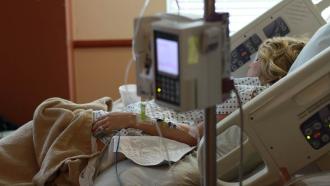
In a recent study, researchers from the Indian Institute of Science Education and Research Pune have investigated the role of an enzyme in the cells of individuals with PHARC. PHARC is a neurodegenerative disease characterised by polyneuropathy (damage to multiple nerves outside the brain and central nervous system), hearing loss, ataxia, retinitis pigmentosa (loss of cells in the retina) and cataract. The findings of the research, supported by the Wellcome Trust/DBT India Alliance and the Department of Science and Technology, were published in The Journal of Biological Chemistry.
PHARC is marked by various problems in our central and peripheral nervous system, hearing loss, and early onset of cataract and eventual blindness. The associated symptoms of this disorder appear in late-childhood or early-teenage years and progress with age. Studies in the past have indicated that the mutations in the Abhd12 (alpha/beta-hydrolase domain containing 12) gene are responsible for this disorder.
One such study has reported that the gene encodes an enzyme that is vital to the functioning of both the central and peripheral nervous systems and the eye. Another study found an increased accumulation of a lipid called lysophosphatidylserine (lyso-PS) in the brains of mice when the researchers blocked the synthesis of the ABHD12 enzyme. In the current study, the researchers have tried to find an explanation for this increased accumulation of lyso-PS.
The researchers observed that the ABHD12 enzyme is usually found on the membrane of the endoplasmic reticulum, a vital cell organelle where many fatty acids and lipids are synthesised. This enzyme catalyses the decomposition of 2-arachidonoyl glycerol (2-AG), a lipid transmitter.
“The ABHD12 is localized at the cellular compartment where the biosynthesis of both very long chain fatty acids and phosphatidylserine lipids is the highest”, say the authors about the significance of its location in the ER.
The researchers artificially synthesized a group of lipids and studied their interaction with the ABHD12 enzyme. They observed that the enzyme acted on very long chain (VLC) lipids better than others. Based on this, the researchers hypothesise that the enzyme could play an essential role in regulating the level of lyso-PS lipids. “Our biochemical studies suggest speculatively that given ABHD12’s preference for VLC lipids, it functions as a major lipase controlling the concentrations of the VLC lipids, which are constantly biosynthesized in the ER membrane”, say the researchers.
Summarising their findings, the researchers say, “our findings provide a biochemical explanation for why very-long-chain lipids (such as lyso-PS) accumulate in the brains of ABHD12 knockout mice”. The findings would help us understand the pathology of PHARC and the mechanism of the ABHD12 enzyme in our cells.






